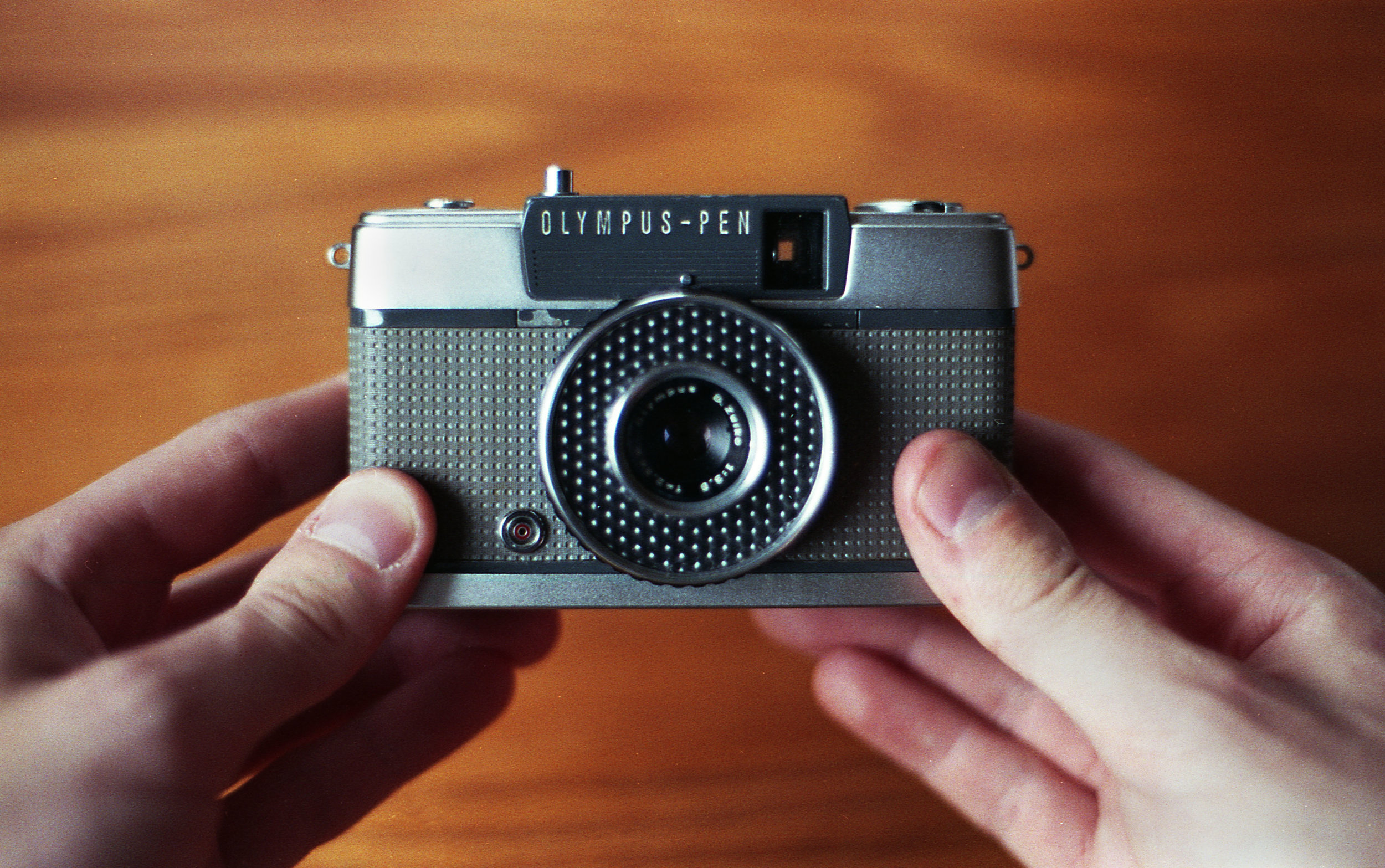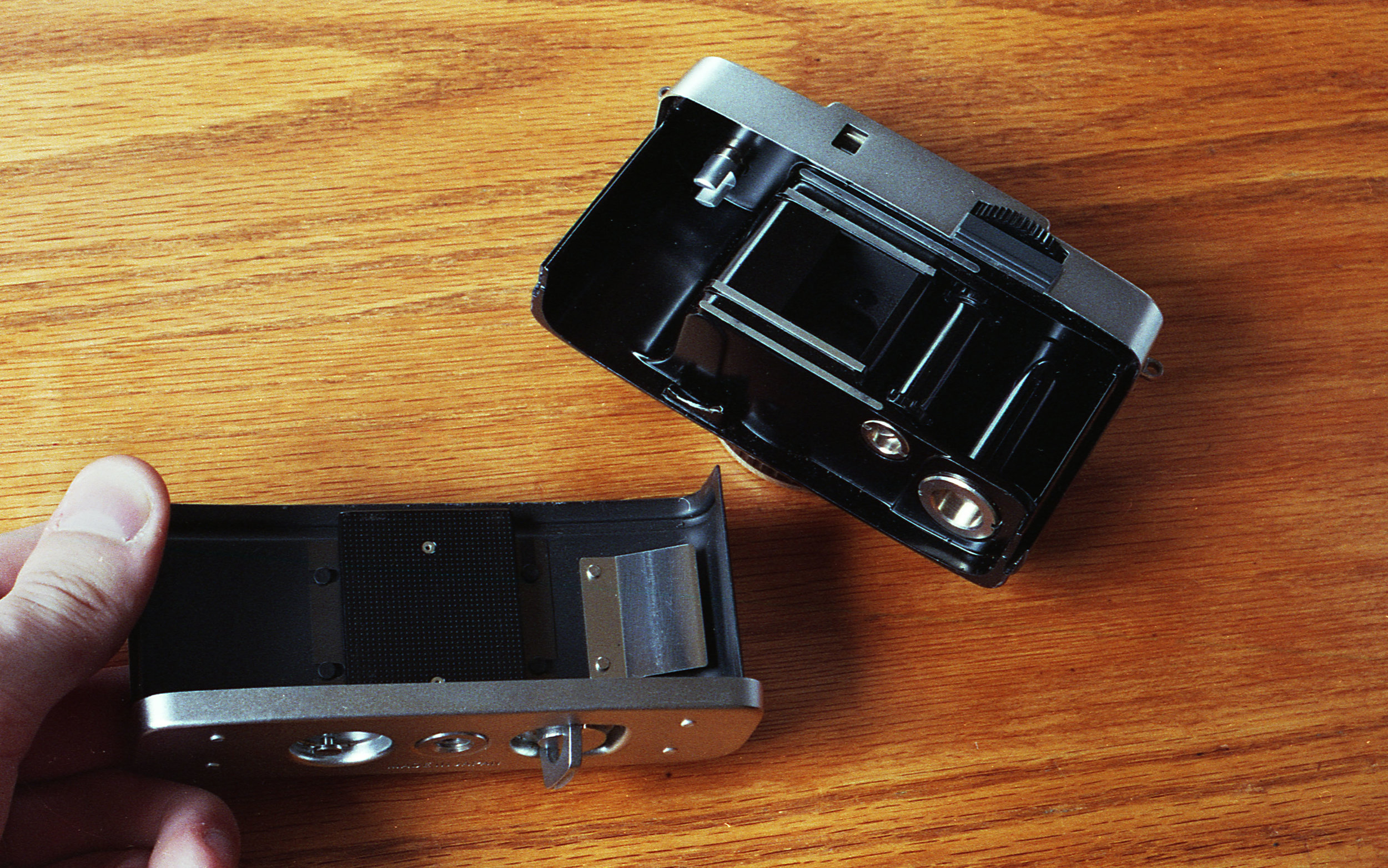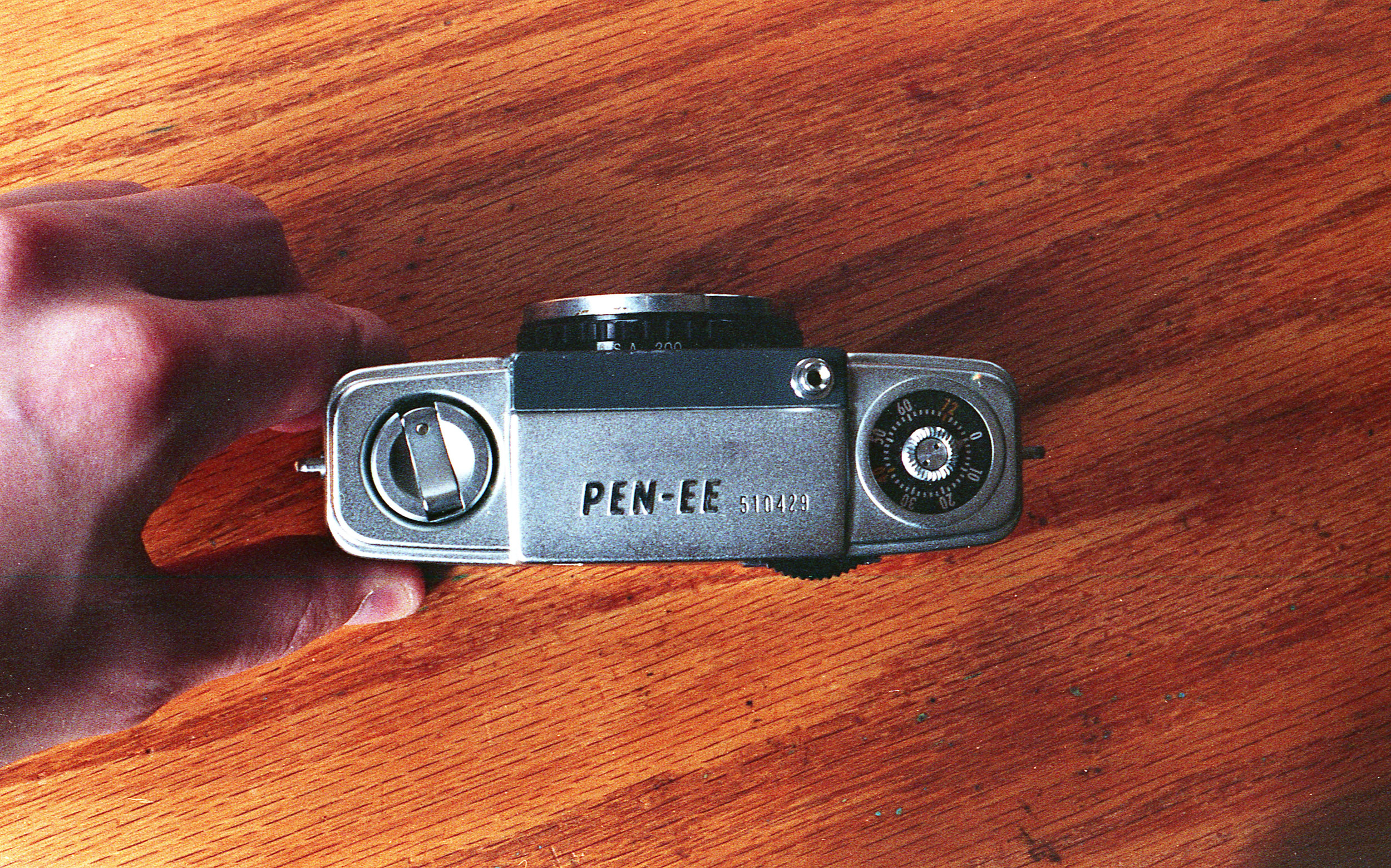January 5th 2019
Olympus Pen EE
The story behind the inception of the original Olympus Pen camera is quite the tale, given how many times people said no and that it couldn’t be done to Mr. Yoshihisa Maitani. Originally introduced in 1959 the Olympus Pen was one of the first half-frame cameras ever made and lived on for many years with a multitude of different series and versions. The name was revived in 2009 for a micro for thirds digital camera as well and has the styling of the later Pen camera models. The Olympus Pen EE was the first automatic camera in the Pen line to come out in 1961 to a point and shoot type of audience and started a whole new line for the Pen cameras.
The no frills camera
The Olympus Pen EE was the first Pen camera to be fully automated, making use of the selenium cell that surrounded the lens. An olive green leatherette surrounded by chrome, with the viewfinder sticking out of the top; I’d say it doesn’t lack in styling. With a fixed focus 28mm f/3.5 lens, it is quite wide with an average aperture, but given the nature of a half frame camera it works out to be more or less the feel of a 50mm lens. Looking through the pinhole sized viewfinder is a bit of a hassle for people with glasses, but manageable. With very few settings you can input into this camera, the only ones you can change are the iso and what aperture you want when you're using a flash.
There are 2 different sub models of the Pen EE, mine being the later that had shutter speeds of 1/250th and 1/30th in the flash mode. The highest ISO supported is 200, which is a shame because I found myself indoors more when I had this camera around. One neat feature, and one on most Pen cameras, is when it’s too dark for an exposure a red flag pops up in the viewfinder and it prevents you from taking a picture. This feature is really great and saved me ruining a lot of botched frames. I attempted using the PC socket with a flash, but with no cold shoe, I had to hold the flash and deemed it kind of a waste, given the point and shoot attitude this camera promotes. Another oddity is you have to set the frame counter by hand and make sure you set it correctly. IT COUNTS DOWN, and do not forget to double your exposures as well!
The Specs and Features
Shutter Speeds - 1/30th or 1/250th of a second
Aperture - automatic, f/3.5 to f/22
Meter Type - selenium cell
Shutter - leaf shutter type
ASA - 10 to 200
Lens - D Zuiko 28mm, 4 element, fixed focus
Flash Option - PC socket with cold shoe
Batteries - none needed
Film Type - 35mm
Other Notable Features - manual set frame counter, cable release socket
The EXPERIENCE
The person I bought this camera from online had no idea if it worked, or apparently what a film camera was. A common problem with most Olympus EE series cameras is the meter dying or a problem with the red flag. Luckily the meter was pretty spot on and the red flag is working as it should.
With it being a small fully automatic camera I found myself throwing it in the camera bag more often. That being said, never put a roll of 36 exposure film in a half-frame camera, I did a roll of 24 exposures and I still felt that was way too much. This camera sat in my camera bag for around 5 months, 48 exposures is a lot. I found myself passing up this camera when I wanted to take higher detailed photos and photos of important events. So it was relegated to more snapshot photos, which looking back is what half-frame was really meant for. With the photos I did like, I kept two photos together in each scan and I really like the look with the black bar down the center.
Would I recommend this camera, it really depends. This camera got me to give half-frame another chance but I didn’t come away with many photos I was really loving or wanted to print out. That may have been the fact that all the pictures I really wanted to take, I wouldn’t do with a half-frame camera. Therefore a lot of my pictures fell into a snapshot, I don’t know what to do with this camera, quality. For a person who wants an automatic point and shoot camera, and who wants to save on film, this is the perfect camera. But for everyone else, there are many other Pen models that are a lot better in my opinion. It’s sad to say, but I foresee myself fixing up my EES-2 and passing this camera on to the next person in line.






